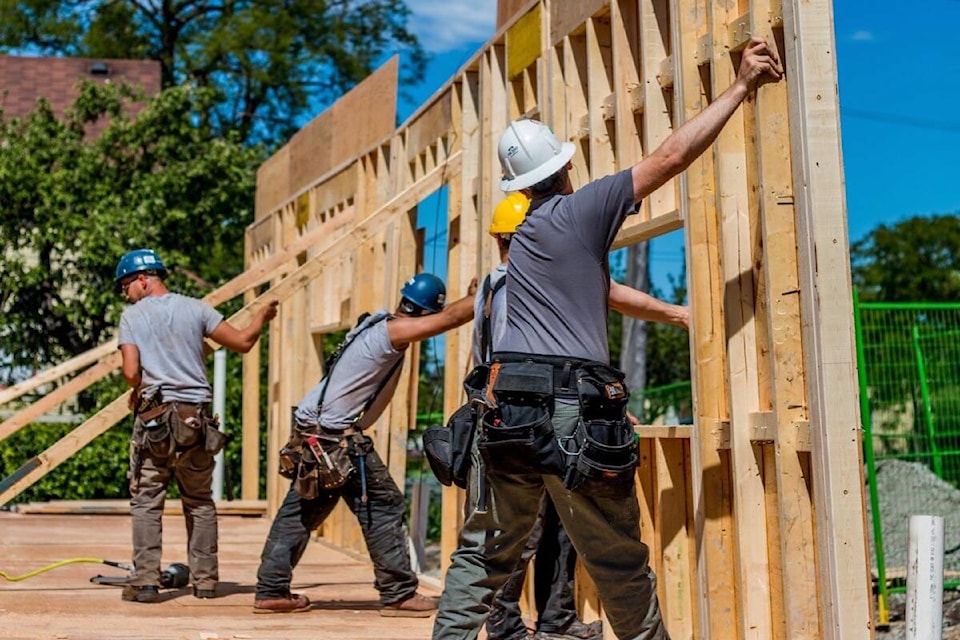A suggestion for the District of Sicamous to get a head start on energy efficient building requirements will be brought before council and the public for further consideration.
At the Feb. 1 district planning and development committee meeting, District of Sicamous building official Kenny Gipps gave a presentation discussing B.C.’s Energy Step Code, which was first enacted as regulation on April 6, 2017.
Energy efficiency has been a requirement in provincial building codes since 2008, but the Step Code outlines what actions need to be taken and deadlines to achieve energy efficient building practices in all new builds.
The goal of the Step plan is to reduce greenhouse gas emissions by achieving net zero-ready buildings that fall under Part 9 of the BC Building Code, which includes single-family homes and small commercial buildings.
Sicamous is currently on step 2 of the plan, which requires new builds to be 10 per cent more efficient than the requirements of the 2014 BC Building Code.
The Step Code doubles overall performance requirements every five years, meaning step 3 will require 20 per cent more efficiency, step 4 40 per cent – the final step, in 2023, will require new builds to be net zero.
READ MORE: Province responds to concerns with prolonged Highway 1 bridge replacement in Sicamous
Sicamous will enter into step 3 of the plan sometime this year, but Gipps said the province has yet to give a deadline for that level of efficiency to become the requirement.
It was supposed to happen in late 2022 but was pushed back.
Gipps recommended Sicamous preemptively require all new builds to comply to step 3 standards.
Gipps outlined the benefits of early compliance, explaining occupants of homes built to step 3 standards will enjoy improved comfort in higher energy efficient homes, as well as health and air quality benefits, reduced noise pollution and lower energy bills. The environmental benefits are reduced greenhouse gas emissions.
Economic benefits include making the building sector more competitive and introducing new economic development opportunities in B.C., which is already a green building design and construction leader, Gipps said. Also noted was industry flexibility to pursue more innovative solutions and a simple and efficient set of standards for local governments to follow while achieving its climate action goals.
He also mentioned trade-offs, including increased construction costs, additional education requirements and design limitations on new builds. Step 3 is estimated to make new builds cost around 0.5 to 5 per cent more.
District of Sicamous Bylaw 700, 2008, will have to be amended to account for the building requirements, and if council adopts the motion to opt in early, the province will be notified and a six month public consultation period to gauge interest will begin immediately.
Coun. Ian Baillie said if provincial implementation will begin this year anyway, early adoption will only put the district a few months ahead.
He said programs like this make sense but also escalate the cost of building in the midst of a housing crisis.
“We’re trying to do everything at this point,” Baillie said.
“If people don’t have any homes to live in that are affordable then what’s the bloody point.”
District planner Sarah Martin said that contractors and developers already know these requirements are coming and a majority of them already build to the standard, but homeowners likely won’t know anything about them.
She said starting the program early can help share the information so people aren’t caught unaware with higher costs when step 3 becomes mandatory.
Martin added a large component of the district’s housing strategy is ‘wellness,’ and wellness involves improving things like energy efficiency.
She said the idea is to put low-income families into homes they can afford to heat and the step plan factors directly into that.
Gipps responded to concerns that new builds would cost more than the mentioned 0.5 to five per cent increase, stating that step 3 mostly involved mechanical equipment changes from propane to electric models, and less structural changes, and he said the cost estimate is likely accurate.
Designers and builders have the option to take either a prescriptive or a performance approach to code compliance within the code.
A prescriptive approach means the building code lays out exactly what needs to be done for each part of a building plan to make the building energy efficient, and a performance based approach looks at the entire building, utilizing a Certified Energy Advisor (CEA) to determine what level of performance it meets.
The inspection takes into account window designs, wall insulation, and allows for trade-offs; if one section doesn’t meet compliance, the energy efficiency can be made up in another part of the building.
The motion was approved to be brought to council for further discussion and possible public consultation before being sent to the province. It was also recommended that local builders and developers come to the next council meeting to share their perspectives.
READ MORE: Salmon Arm does not escape B.C. trend of escalating overdose calls to paramedics
@willson_becca
rebecca.willson@saobserver.net
Like us on Facebook and follow us on Twitter and subscribe to our daily newsletter.
